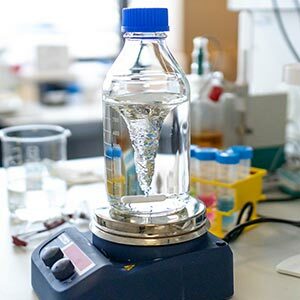What are Nitrosamines?
Nitrosamines or N-nitrosamines are formed when amines react with nitrous acid salts – so-called nitrites – under acidic conditions such as those found in the stomach. These have been classified as possible carcinogens for humans.
In the past, contamination by nitrosamines was detected in various medications. This necessitated a review of production processes to identify, exclude or minimize possible sources of contamination in raw materials, solvents (such as DMF), during chemical synthesis or even in the supply chain.
In the past, impurities caused by nitrosamines have been detected in various drugs, making it necessary to test the respective production processes.
Since 2020, authorities such as the FDA and EMA have been cooperating to share information to develop methods for the detection and identification of nitrosamines, and thus ensure the safety and quality of medicines.
Possible contamination sources
- Raw materials and intermediates
- Solvents (such as DMF)
- Reagents and catalysts
- Formation during chemical synthesis
- Packaging materials
Limit values according to ICH M7 (R1)
| Nitrosamine | Allowed intake [ng/day] |
| NDMA | 96.0 |
| NDEA | 26.5 |
| NMBA | 96.0 |
| DIPNA | 26.5 |
| EIPNA | 26.5 |
Reference Analytics Service
GMP-compliant determination of nitrosamines, acc. to Pharm. Eur. 2.4.36 incl.
- Identification
- Limit-test
- Quantification
From blister packs or other packaging, tablets, powders, active ingredients, etc.
GMP-compliant product-specific method validation incl.
- Standard validation
- Validation after method transfer
- Revalidation

Our GC-MS enables the accurate and reliable analysis of nitrosamines at very low detection limits. At Reference Analytics, reliability and further development are important cornerstones. Therefore, we are pleased to have added another highly selective analytical instrument to our equipment fleet – our LC-MS/MS.
If you have any questions about nitrosamines and their analysis, we will of course be happy to assist you with our expertise.
